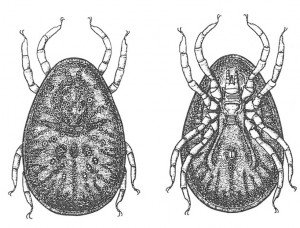
When a European pigeon tick is hatched from the egg, it is less than l mm long. It immediately seeks out a pigeon or a young pigeon to which it latches on and feeds on for 2-10 days. Then, once it is full, it leaves its host to crawl into a hiding place where it can digest and molt. After evolving into a nymph, the tick repeats the cycle once more – It feeds for approx. 20 minutes – and then climbs back into hiding. This is repeated a few times and, finally, the tick is an adult male or female.
The male only needs to feed once a year. The female needs blood after mating in order to lay eggs. A female European pigeon tick lays 20-70 eggs at a time and the eggs hatch within a month. Long lives. What makes pigeon ticks so difficult to handle is their ability to survive for long periods of time without feeding. The life cycle usually lasts 2-3 years, but in cold environments the ticks can starve for several years. There are reports of abandoned pigeon houses in Germany, where there were still high infestations of pigeon ticks after 13 and 21 years, respectively. In Denmark, the ticks have been spotted up to ten years after the last pigeon was seen in the house. However, that the pigeon ticks survive this long is rare. Usually, the ticks disappear after five years, but they may appear individually at a later point.




